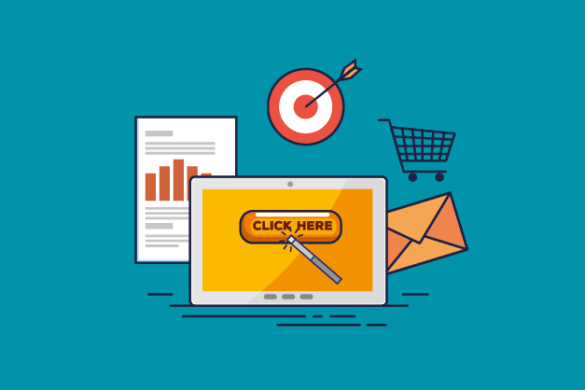Table of Contents
A landing page is essential to the success of any internet business.
Improving landing page performance, also known as optimization, is crucial to creating a compelling experience that engages visitors and converts them into paying customers.
Increasing prospects and user conversions require the implementation of an efficient landing page optimization (LPO) strategy, regardless of whether you’re starting from scratch or already have an existing landing page.
This guide offers advice on creating an engaging landing page that encourages visitors to convert. Discover best practices, real-world examples, and potential pitfalls to avoid as you work to accomplish your goals.
What is landing page optimization?
Did you know that landing page conversion rates can drop as low as 5.89% on average?
By implementing landing page optimization (LPO), you can increase any landing page’s conversion rate as opposed to just creating it and calling it a day.
Landing page optimization means carefully focusing on the most important components of a webpage. When everything is finished, your target audience will have a more engaging user experience, which will eventually increase sales for your company.
As a subset of conversion rate optimization (CRO), landing page optimization involves making technical improvements to the page’s design in addition to using A/B testing strategies to identify the most effective copy, images, call-to-action buttons, and other elements that contribute to higher bounce rates.
3 stages of landing page optimization
- Determine whether there are any design or functional problems with the landing page. Identify the particular elements of the user experience that lead to a high bounce rate and low conversion rates so that you can take appropriate action.
- Use A/B testing or other controlled experiments to assess page improvements. Try out different page elements, like headlines, content, images, fonts, forms, and calls to action (CTAs), to see which combination works best for you to reach your goals.
- Monitor the effect on the page’s conversion rate to determine how well your optimization efforts are working. You can perform additional split testing to improve your results by gaining insights into the components that impact conversion rates through the analysis of user data.
Why landing page optimization matters
Because of their ease of use, flexibility, and better user experience than other tools, landing pages are very important in online marketing campaigns. Because of their strength, it becomes critical to maximize their effectiveness.
The goal of landing page optimization is to quickly achieve the maximum conversion rate from users visiting that particular page.
Compared to other tools like pop-ups, an optimized landing page can result in a 160% increase in conversion rates for actions like sign-ups.
It’s important to seize these opportunities and not pass them up because of things like sluggish page loads, excessively long lead capture forms, or CTAs that aren’t appropriate for your target audience.
7 landing page optimization best practices to use on every page
Increasing conversions and raising user engagement require the application of efficient landing page optimization strategies. Following these guidelines will help you make sure that your landing pages drive visitors to take the desired action in addition to drawing them in.
Every component, from compelling copy to meta elements, is essential to improving the overall effectiveness of your landing pages. We’ve listed seven essential practices below that can have a big impact on how successful your landing page strategy is:
1. Reduce the number of actions to be taken on the landing page
Try reducing the number of the form fields, removing unnecessary features, or changing the website’s navigation. Simplifying a design and adding lots of white space and a prominent call to action can increase conversion rates by as much as 10%.
2. Reduce page load time to improve user experience
Not only do websites with faster loading times draw in more visitors, but they also have higher conversion rates—especially when they load in under two seconds. To achieve this, technical SEO strategies like lowering redirects, improving server response times, making use of caching, and employing content distribution networks (CDNs) are crucial.
Additionally, marketers and UX teams must optimize images for the web, which includes choosing the right file formats and sizes.
3. Give your value proposition quickly and clearly
Experiment with different headlines and call-to-action text that correspond to the language that your visitors are using. Maintain coherence in the copy of your landing page and advertisement to prevent user confusion and declining conversion rates.
4. Customize the landing page experience based on the visitor’s context and needs
Ad keywords should be incorporated into the copy on your landing page to keep it consistent with what searchers are looking for. Make sure the content of the landing page is appropriate for users coming from various traffic sources.
5. Include social proof components to slightly increase conversions.
Try enhancing the landing page with case studies, testimonials, partner logos, customer logos, and other types of social proof. Even a 1% increase in conversion can have a big impact, even though the impact may be small. This highlights the significance of trust-building components like phone numbers or Verisign badges.
6. Boost lead generation activities by providing useful incentives
The best way to generate leads is through landing pages, but having a well-optimized website might not be enough. Providing a valuable offering is essential to getting customers to share their personal information.
If the primary call-to-action on a landing page is, for example, to submit just an email address, prospective clients are more likely to comply if an incentive reward—like a lead magnet—is offered in return.
7. Optimize landing pages for search engines to enhance visibility
Make sure your landing page is optimized for organic search, also referred to as search engine optimization (SEO), even if its main purpose is paid advertising. Landing pages are frequently reached by users via organic search, which greatly increases engagement metrics and conversion rates.
Like any other page on your website, landing pages need to be optimized for search engines to guarantee their longevity for ongoing projects. Decide which keywords will work best for your landing page and incorporate them into:
- Metadata elements that include the URL, title, and meta description
- headlines, body text, and image alt text on landing pages
You can acquire insights into different kinds of traffic and modify your landing page by efficiently conveying the content of your page to Google and other search engines and by examining organic user behavior using tools like Google Analytics.
In conclusion, landing page optimization stands as a critical pillar of any successful digital marketing strategy. By understanding the key elements, analyzing user behavior, and implementing best practices, businesses can create landing pages that resonate with their audience and drive meaningful results.
At SteveAyo, we understand the importance of effective landing page optimization. That’s why we offer personalized services to help businesses optimize their landing pages for maximum impact. Chat with an expert today by calling us at (+255) 783-957-836 or contacting us online. Let us help you unlock the full potential of your landing pages and achieve your marketing goals.
FAQs about landing page optimization
What is a good conversion rate for a landing page?
WordStream says the average conversion rate across all industries is around 2.35%. But ‘average’ isn’t the same as ‘good’—some sites achieve over 11% conversion, so success by their standards is about much more than beating an average.
While knowing these figures as benchmarks is useful, there’s no one-size-fits-all answer to your conversion rate goals. Your best course of action is to set your own marketing goals and work on improving your current conversion rate by following landing page optimization practices.
Which landing page elements should I optimize?
Continuously optimize the most important elements to improve the overall landing page experience and relevance to the specific target audience:
1. Headlines that clearly convey the offer and benefits
2. Copy that clearly outlines the value proposition and any special benefits
3. Images that complement the copy and draw the viewer’s attention
4. CTAs that stand out and are compelling enough to get people to take the desired action
5. Forms that are as short and simple as possible to reduce friction







Add your first comment to this post